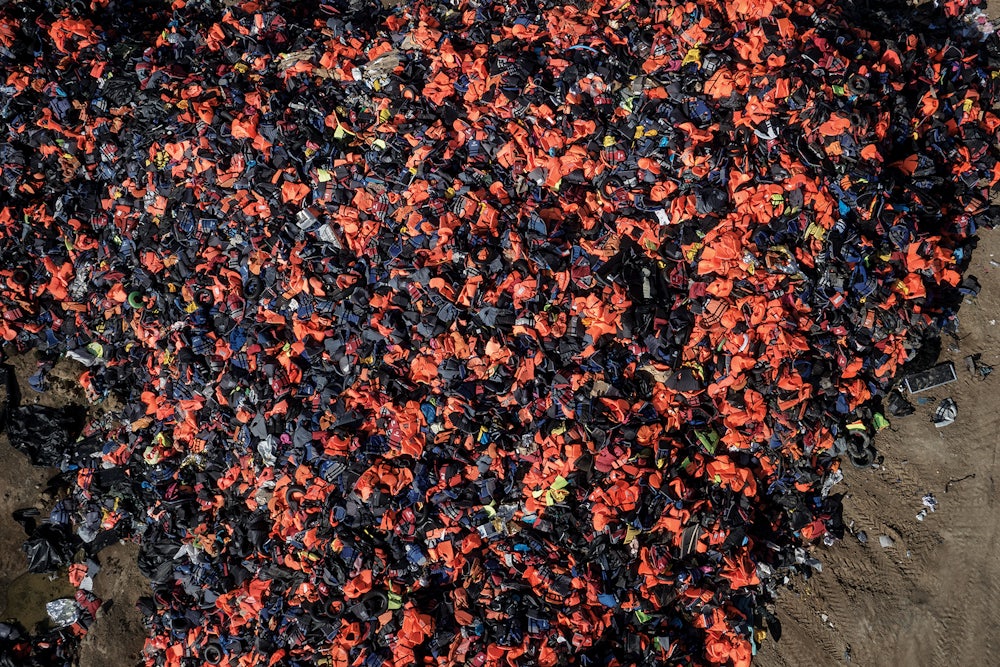More than 100,000 life vests lay abandoned in a rocky field in northern Lesbos, a small Greek island with a year-round population of only 86,000. Last year, more than 850,000 men, women, and children boarded rubber dinghies and rickety wooden boats in Turkey, about an hour to the east, to travel across the Aegean Sea to Greece. Most hailed from Syria, Afghanistan, and Iraq, where civil war and the threat of ISIS compelled them to attempt a journey that often ends in internment, deportation, or death. Shortly after this photo was taken, the mayor of Lesbos announced that the island had run out of room to bury its dead.
As Europe’s migrant crisis enters its second year, host countries have begun to buckle under the strain. In the first six months of this year alone, more than 90,000 new refugees arrived on Lesbos. With inland countries like Austria and Macedonia closing their borders to deter the growing influx, Greece’s overpopulated refugee camps are becoming a pressure cooker for violent unrest.
To capture the scale of the crisis, Danish photographer Rasmus Degnbol built a custom drone, retrofitting it with a camera to snap aerial views of the mass migration. He remembers taking drone photos in Lesbos last October, when arrivals were at an all-time high. “People arriving on shore were in shock,” he says. “I’ve seen journalists break down when they saw this mountain of vests. Others just stared at it in disbelief. The place gets to you, because it’s one of the only places where you can actually sense how many people tried to reach Europe.”
Starting August 26th, follow Rasmus Degnbol’s photographs from this series on Instagram @NewRepublic.

